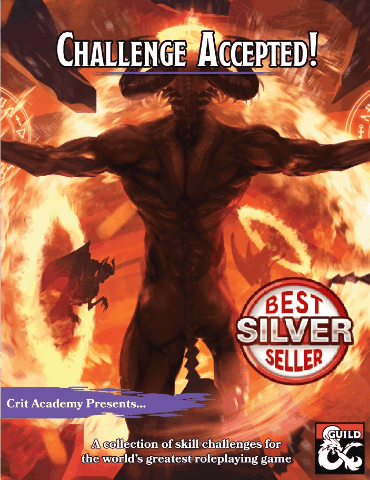Using Sentient Magic Items in Dungeons & Dragons
- Justin Handlin

- Oct 18, 2021
- 5 min read

Sentient Magic Items in Dungeons & Dragons
Deep in the tunnels under an ancient obelisk, a thieving rogue pulls a sleek, steel blade from a pile of glittering golden treasure. As she grips the dagger, she hears a curious voice. Dropping the dagger in shock, the blade continues to speak. Inquiring about her travels and sharing tales of its own adventures, including how it ended up in these ever so lonely dragon’s hoard…
Magic items that have personality and will of its own are called a sentient weapon. Whether a bizarre twist of fate or complex ritual, an item can entrap or form its own mind. These extremely rare items can be found scattered throughout the land, lost to history.
There are many benefits to including a sentient item in your Dungeons & Dragons game. I will be discussing a few in the hopes of convincing you why you should include them in your games and provide tips on developing them so they are fun and interesting for everyone. Much like adding an NPC into your story, they can serve a multitude of different functions.
Why Use Sentient Items?
So, let’s get one thing out of the way. Just like playing an NPC, absolutely AVOID making the magic item the center of the show. You can certainly use the sentient item and its persona to aid and assist the characters, but don’t let it steal the spotlight. It should only help out a few times per session.
Plot Device
The most obvious use is a plot device. A quest involves seeking out the rare item, or using its knowledge to seek out its owner or some other threat. Maybe the sentient item is a key to accessing a wondrous location. Whatever it may be, the item is introduced strictly to move the story in a direction. As stated, this is the most obvious and most often used. This is perfect if you like to play a stubborn personality that requires the characters to make it happy before it will agree to aid the characters.
A Guide and Bonus Skills
A common use of sentient items is as a guide. You can use them as a way to convey information to the party. Since sentient items often have been around for long periods of time, thousands of years in many cases. Throughout their existence, they have served many masters in the process, they develop a wealth of knowledge and opinions in the process. This is perfect for parties that lack a particular skill set proficiency, such as a knowledge skill like Arcana that can be missing without a party wizard. Tossing these at a player who loves uncovering lore and worldbuilding is a perfect match. Additionally, this makes it easier to avoid the pitfalls that can often come with a DM Player Character.
More Options to Engage Roleplayers
Another reason is to engage players who love to roleplay. Sentient items give you, as the DM, far more freedom to interact with the roleplayer even when there is no reason to have an NPC around. This is perfect deep in dungeons, caves or even while traveling in places where travelers are not likely to tread. Just like anything else in the world of Dungeons & Dragons, sentient items can have fantastic backgrounds. Much like a player character, this can inform their knowledge, personality traits, bonds, ideals and flaws. Each of which should be fleshed out. You can use the Player’s Handbook backgrounds section as a starting point.

Extraordinary Expeditions is a collection of modular adventures designed on a flexible framework to be easily tossed into any fantasy setting. Scour the Desolate Wastelands for the lost library of Zenith Athenaeum. Save, escort, and protect villagers as they seek a safe haven, while two towering titans do battle. Venture into a village completely overrun by monstrous creatures from the Far Realm. Complete with adventures, maps, and monster stat blocks.
One of the best parts about any roleplaying game isn’t just the fantastic battles. It’s the memorable locations that they take place in, and the interesting NPCs that our heroes encounter. Our goal was to build a project that included all these great points. With Crit Academy’s expertise in 5th Edition and Arjade Productions’ masterful knowledge of 3.5 rules, we believe Extraordinary Expeditions will hit on all these points and so much more.
Entertainment
A sentient item should be helpful to the player characters, but this doesn’t mean they have to like each other. This makes for a bit of intra-party conflict in a good way. By having a sentient item that is opposed to the party’s views or ideals, you can not-so subtly offer them advice on different approaches to a challenge the characters may not have thought of. Of course, doing it with a bit of attitude is always super fun. Especially if the item has some sort of guilty pleasure and seeks to sate it at the cost of aiding the characters.
Introducing Sentient Items
When you decide to include a sentient item in your stories and campaigns, first consider how you want the characters to discover it. Locating them as part of a dragon’s hoard is a great one, as it can easily explain why it's not being wielded. Likely a dragon just considers it a piece of property and has no interest in its personality. Other options may include completely a prophecy that allows the weapon to be removed from its place of holding, such as a sword in a stone.
Duration
Next, consider, based on the sentient items features, which character is likely to be in possession of it the most. This can help you decide how you may want to introduce the item as well. With the details filled out, do you expect the characters to hold the item for long or for a short time? If you don’t plan to have it kept indefinitely (maybe it's legendary and too powerful), plan to have a way of removing it from the game in a satisfying way. While there are a number of ways to do this; villain destroying the item during battle is a common one. I think it is better to include a way for the magic item to achieve an important goal. Once it has achieved this goal, it can be allowed to release itself from its bond.
If you intend to keep the item around for a long time. Consider its goals, and upon achieving them, you could allow it to evolve and get stronger. Or maybe, it bonds well with a character. As their bond grows, so does the strength of the sentient item. This can be as simple as going from a +1 longsword, to a +2 longsword or as complex as going from a +1 longsword to a Dragon Slayer after defeating a young red dragon.
Whatever direction you decide to take. Remember, sentient magic items are extremely rare, but can add surprisingly memorable moments to a Dungeons & Dragons adventure. I know my players will never forget Wanita, their bag of scolding. All she ever wanted was to be respected and not just a storage unit for adventurers.
Keep your Blades Sharp and Spells Prepared Heroes
If you enjoy the content and want to support us, visit our store or follow us on social media, join us on discord, youtube, and leave us a review.
Keep your blades sharp and spells prepared heroes!
*Crit Academy is an Affiliate of Amazon, DMsguild and DriveThruRPG*















Comments